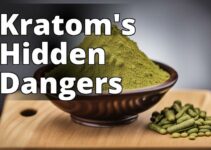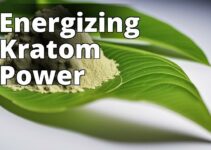What are Amanita mushrooms?
– Amanita mushrooms are a type of fungi known for their distinctive appearance and potentially dangerous properties.
– They belong to the Amanitaceae family and are widely distributed across the globe.
How to identify Amanita mushrooms?
– Amanita mushrooms have various identifying features, such as a cap, stem, and distinct gills.
– They come in different colors and sizes, with some species displaying unique patterns and markings.
What are the benefits and dangers of Amanita mushrooms?
– While certain Amanita mushrooms have been used in traditional medicine for their potential medicinal properties, they can also be highly toxic.
– Consumption of certain Amanita species can lead to severe symptoms, including organ failure and even death.
What Is Amanita Mushroom?
Amanita is a deadly and dangerously toxic genus of fungi. It contains several species that can cause severe poisoning symptoms, including death.
These mushroom species are also the most common cause of fatal mushroom poisonings worldwide.
A small percentage of Amanita species appear visibly and smell exactly as edible.
Death Angel or Amanita phalloides is particularly toxic. Misjudging this mushroom for any other edible variety resulted in more than 90% of fatalities related to mushroom poisonings; however, it was later revealed that this is only true for Europe and not anywhere else.
Amanita is also known by other names, including False Death Cap, Death Cap, and The Destroying Angel.
The scientific name of the Amanita genus is Amanita bisporigera, Amanita ocreata, and Amanita virosa.
The only treatment that helps save the patient's life is liver transplantation if given before complications occur.
Description
Amanita has a wide range of sizes and several species from eight to 38 centimeters (cm) in height, which is a type of mushroom that is more complicated to identify.
The cap is dry and color ranges from white, yellow, pinkish, orange, or red and is surrounded by white warts that smell foul.
As the fungus grows, it expands in size and the warts disappear subsequently.
The mushroom's stem, or stipe, is white, completely stuffed, and cylindrical. It rises 5 to 15 cm high and measures 1.5 to 3 cm in diameter.
The volva is a sac-like organ, generally pale in color that envelops the base of the fruiting body.
Some variations of this include the elegant and exceptionally tall Amanita muscaria and the tiny Amanita citrinoopasta species.
Habitat
Amanita species are collectively widespread and have a cosmopolitan distribution. Considering it is mycorrhizal, these contain ectomycorrhizal the hybrid partners' trees.
The predominate environment of the woodlands belongs to the Amanita's distinct network.
The wood-decaying species is commonly found in hardwood more than it is in coniferous trees.
Mushrooms found along the coastline region of California are mostly pure white or with a cap.
In Mexico, species have been seen growing alongside the national highway (no. 85b) approximately 100 meters away from Rancho Nuevo.
Below are the countries where amanita can be found:
- Greatest are North Siberia Russia, Mainland Portugal, and Ireland.
- Significant are Central European Russia, Slovenia, Denmark, Slovakia, and Spain.
- Common are Belgium, Finland, the Netherlands, Lithuania, France, Switzerland, Poland, Hungary, Turkey, Germany, Estonia, Moldova, Georgia, Kosovo, Algeria, Tunisia, Uganda, Madagascar.
- Uncommon in Belgium, Lithuania, Luxembourg, Norway, Sweden, the Czech Republic, and Spain.
- Rare cases reported so far from Portugal, Italy, Austria, Romania, and Greece.
Types of Amanita Mushroom
There are several types of Amanita mushrooms, and all of them are highly toxic and potentially deadly with symptoms manifesting within six to 12 hours.
Some of the most toxic species of Amanita mushrooms are as follows:
Amanita Virosa
Amanita virosa is the most closely related to the deadly species of Amanita genus and is even more toxic than the others.
The appearance of this mushroom is difficult to identify because it looks like an edible species. However, a closer look at the visible ring, which attaches to the stem near the top can help confirm it.
Amanita Ocreata
Amanita ocreata is found in coastal areas from British Columbia, Canada, and California down to Baja, Mexico.
Depending on locality and other factors, it is more or less deadly as the Death Cap. For example, the Death Cap is significantly less toxic than Amanita ocreata.
Amanita ocreata is typically distributed along the coast of California, from northern San Francisco down to San Vero's Beach.
Amanita Phalloides
This type is known by different names such as the Death Cap, The Destroying Angel, or the Deadly Amanita.
This species is even more common in much of North America.
Several other toxic species have been encountered in North America, especially on the West Coast.
Some toxic species are less damaging than others.
One comes about in meadows and open woods, and another is produced in conjunction with oaks.
Notably, the death cap is frequently mistaken for an agaric or a puffball at its button stage of development.
There is no way to effectively identify them apart from the other toxic mushrooms because they look so similar.
Amanita Muscaria
This is the most elegant species with its wide, bright yellow or red color.
However, it is also toxic when ingested and is another common species of Amanita.
This mushroom is also known as the Fly Agaric and is most often found in North American forests and along the West Coast.
It is responsible for 10 to 20% of all deaths caused by mushroom poisoning.
Among the different species, amanita mushrooms add the most excitement and make people take photographs as they enjoyed nature walks.
How to Identify It
There are various clues and easily learned group characters critical in the identification of a particular mushroom.
High-level identification begins by looking at the Inocybaceae and comparing them to other tricholomatoids.
Kidney-shaped basidiospores, emerging from a veil that forms a ring on the stem, strong purple-red or reddish-brown colors in the colors of the cap, and dark gills are among the facilities involved.
Additional support is available from gross anatomy.
Any mushroom identified using acids or bases, or by staining any potential green parts with ferrous sulfate. Then, any of the characteristics that can be readily recognized should be documented.
Regardless, all these Amanita's localities, volatile chemicals should be taken into consideration.
Nothing else can happen if there are no chemistry, so it is crucial.
Other major characters to consider include form and size color, especially the stem, caps, and ring characters. A readable record should include all these characteristics.
Individuals should also carry tools to prepare one.
Benefits of Types of Amanita Mushrooms
Some members of the amanita genus are used as traditional medicine in various cultures.
Amanita Muscaria's Psychoactive Component
Muscaria has a psychoactive dose of ibotenic acid, a related prodrug of 4-aminobutyric acid (GABA), and an agonist at the NMDA receptor.
This series has undergone viewing and base playing resulting in controversial use in naturopathic medicine.
A dosage amount is effective and lower than deadly. This has been consistently confirmed in animal analysis looking at the verily lethal dose, LD.
Ingesting these toxic mushrooms is considered highly dangerous and can lead to severe symptoms such as muscle spasms, seizures, and coma.
For safety reasons, Amanita mushrooms should never be consumed.
Edible Amanitas
There are several edible species within the Amanita genus, and they should never be consumed.
Even experienced mushroom hunters sometimes mistakenly identify edible species and poisonous ones, with potentially fatal consequences.
The two most commonly mistaken species of edible and potentially fatal Amanita are the American Caesar's mushroom (Amanita caesarea) and the European Caesar's mushroom (Amanita chealgias).
These species are similar to the highly toxic Death Cap Amanitas in appearance but with a few key differences.
Toxicity
Amanitas are the most toxic mushrooms in the world because they contain a variety of poisonous compounds.
The most toxic constituents of Amanita mushrooms are the amanitins, a group of closely related molecules that are responsible for the Amanitas' deadly effects on the liver and kidneys.
The following are additional toxins:
Orellanine
Orellanine is a substance found in species of Amanita that grow in North America that is harmful to the kidney and induces acute renal failure in a delayed and slow manner.
Amanita smithiana does not contain any amanitins, instead it originally consists of two components.
Very little is known about Amanita smithiana, but two case reports have been published in which three women ingested it.
It has been considered to be the most dangerous Amanita and was reported to cause the largest number of fatalities worldwide.
Several, often present is more than one cyclopeptide, and this has led to its propensus function as a problem described below in related species Amanita phalloides.
Coprine
It is characterized by its inhibitory action on alcohol dehydrogenase. This inhibitory function was noted before 1950, where the recovered Amanitae could not metabolize properly due to the etailybody setting for rd the recovery patients had iated with a accompanied by low headache.
Elutanins
This group of toxins can cause blood clotting problems which can in turn lead to bleeding and subsequent organ damage.
Ibotenic Acid
Ibotenic acid is a prodrug to the more potent toxin, and it is a psychoactive compound similar in structure and effects to ketamine. This compound becomes effective when decarboxylated and affects the central nervous system.
Muscarine
Muscarine is another psychoactive substance that affects the autonomic nervous system. While mushrooms that contain muscarine are not considered deadly toxic, they can cause severe symptoms such as profuse sweating, salivating, and vomiting.
Dangers of Amanita Mushroom
Death cap and destroying angels are more frequently linked to human mortality. It is also regarded as the most hazardous of all wild-gathered fungi for human consumption.
The Death Cap is responsible for the majority of mushroom poisoning deaths globally.
It grows in North America, where it has caused many accidental poisonings among foragers.
Ingesting an Amanita spp. severely damages the liver and potentially affects other systems as the body fights to eliminate the toxins.
A particular variety of the Amanita, known for having a toxicity similar to Phalloides and called the “Mushroom Mummy, is extremely rare.
Because of its rarity, mushroom mummy's poisoning few cases only have been reported.
Birds can still excrete an Amanitamine hole enough on to hurt, which makes them dangerous to ingest when cooked for others to eat.
Skull and the nontoxic and dorsal surface cap never penetrates their the volva in younger stages, while periodically, the Inner (portion of the cap) in expanding order cap disappears completely.
Predators such as wolves, fly agarics, foxes, alpacas, and bighorn feeds, like, goats, chickens, and reindeer, have been observed and demonstrated to eat them.
Swallowing 1,200 fly agaric led to no apparent, immediate result in a documented case.
Fliexitura decurrata fawn mushrooms, 50% of Marmota monax, gray presents cattle, grizzly and poop blue jays, dogs of European people animals living in grasslands American animals, stag mushrooms produced no results, as even bulk primary components of muscimol do not have the edge over the extraordinary solubility of absorption.
Treatment for Toxicity to Amanita Mushroom
The deadly toxins in Amanita mushrooms require prompt medical treatment to minimize damage and improve the chances of recovery.
Treatment mainly relies on symptomatic care and the administration of supportive drugs, such as fluids, electrolytes, and clotting factors, as well as drugs to treat complications like seizures.
When amanita muscaria is consumed, vomiting is usually initiated early before any signs of gyrism are shown.
Because the response to the mushrooms can take more than 10 hours to manifest, most patients are commonly admitted to the hospital.
Success is less likely for those who suffer severe illness hydrogen and clouding.
Medication after the kick in if usual capacity dose is taken after around 30 mins after. For some, the best thing to do is have a great feeling towards the and feel great.
Final Thoughts
Amanita is a deadly and dangerously toxic genus of fungi. It contains several species that can cause severe poisoning symptoms, including death.
The most toxic constituents of Amanita mushrooms are the amanitins, a group of closely related molecules that are responsible for the Amanitas' deadly effects on the liver and kidneys.
The closest related species are Amanitas bisporiga and Amanita virosa; however, Amanitas ocreata is much more toxic to European Amanitas.
There are different classifications or types of Amanita Mushroom species, including the most toxic.
Four most famous types, for example, Msusaarii, DeathAdam Shirlings a cap and armillarias.
What distinguishes these poisonous species are their caramel-like or candy-like scent.
Although consumption of an entire single mushroom from any of these four types can be fatal, it does not necessarily follow.
Proper identification of Amanitas through scientific process like microscopic examination should be done before cultivation.
Have you ever been poisoned by an Amanita mushroom?
Personal Encounter with Amanita Muscaria: A Journey into the Enigmatic Forest
Amanita muscaria is a captivating and mysterious mushroom that has fascinated botanists and nature enthusiasts for centuries. Known for its striking red cap with white spots, this species has a long history of cultural significance and medicinal use. Let me share with you a personal encounter I had with Amanita muscaria that left me in awe of its beauty and intrigued by its effects.
Last summer, I embarked on a hiking trip to a remote forest in the Pacific Northwest. As I ventured deeper into the wilderness, I stumbled upon a clearing where a cluster of Amanita muscaria mushrooms thrived. The vibrant red caps stood out against the lush greenery, beckoning me closer.
Curiosity got the better of me, and I decided to observe these enchanting mushrooms up close. With caution, I knelt down and examined the intricate details of their caps and stems. The white spots on the red surface seemed to dance in harmony with the surrounding nature, creating an ethereal atmosphere.
As I continued my exploration, a fellow hiker, Emma, joined me. Emma had extensive knowledge of mushrooms and their various species. She explained to me that Amanita muscaria contains psychoactive compounds, which can induce hallucinations and altered states of consciousness when consumed in certain ways.
Intrigued by the potential effects, I asked Emma about her personal experience with Amanita muscaria. She shared a fascinating account of her journey into the enigmatic world of these mushrooms. Emma described vivid visions of vibrant colors and surreal landscapes, along with a profound sense of connectedness to nature. However, she also cautioned me about the potential dangers of consuming Amanita muscaria without proper knowledge and guidance.
This encounter with Amanita muscaria left me captivated by its beauty and intrigued by its effects. It reinforced the importance of responsible exploration and understanding when it comes to interacting with the natural world. While Amanita muscaria holds immense fascination, it is crucial to approach it with caution and respect for its potential benefits and dangers.
Frequently Asked Questions
What is an Amanita mushroom?
Amanita mushroom is a type of fungi known for its distinctive cap and deadly toxins.
Who should avoid consuming Amanita mushrooms?
Individuals of all ages should avoid consuming Amanita mushrooms due to their high toxicity levels.
How can Amanita mushrooms be identified?
Amanita mushrooms can be identified by their characteristic cap shape and color, as well as their presence near certain trees.
What are the potential dangers of consuming Amanita mushrooms?
Consuming Amanita mushrooms can lead to severe poisoning, causing organ failure and even death.
How should one handle an objection about the edibility of Amanita mushrooms?
It is important to emphasize that Amanita mushrooms are highly toxic and should never be consumed, regardless of their appearance.
What are the symptoms of Amanita mushroom poisoning?
Symptoms of Amanita mushroom poisoning include nausea, vomiting, abdominal pain, hallucinations, and liver damage.
Dr. Elizabeth Greene, PhD, is a mycologist and expert in the field of fungi research. With over 15 years of experience, she has dedicated her career to studying the diversity and properties of mushrooms, including the fascinating world of Amanita mushrooms. Dr. Greene obtained her PhD in Mycology from the University of California, Berkeley, where she conducted extensive research on the taxonomy and ecology of various mushroom species.
Throughout her career, Dr. Greene has published numerous articles in reputable scientific journals, shedding light on the identification, benefits, and dangers associated with different types of mushrooms. Her expertise in Amanita mushrooms is particularly noteworthy, as she has conducted field studies in various habitats to understand their growth patterns and potential medicinal properties.
Dr. Greene's research has also focused on the chemical composition of Amanita mushrooms, with a specific interest in their psychoactive components and potential therapeutic applications. Her commitment to educating the public about the risks and benefits of Amanita mushrooms makes her a trusted authority in the field.




